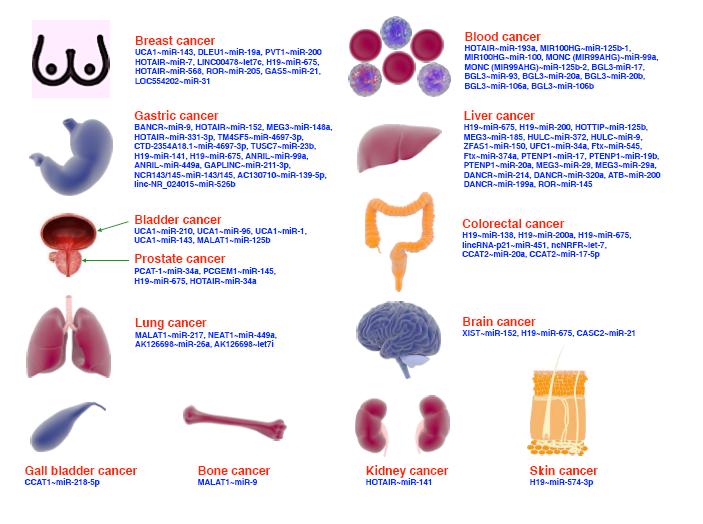| 1. |
Roth GA, Johnson C, Abajobir A, et al. Global, regional, and national burden of cardiovascular diseases for 10 causes, 1990 to 2015. J Am Coll Cardiol, 2017, 70(1): 1-25.
|
| 2. |
Benjamin EJ, Muntner P, Alonso A, et al. Heart disease and stroke statistics-2019 update: a report from the american heart association. Circulation, 2019, 139(10): e56-e528.
|
| 3. |
Rawshani A, Rawshani A, Franzén S, et al. Mortality and cardiovascular disease in type 1 and type 2 diabetes. N Engl J Med, 2017, 376(15): 1407-1418.
|
| 4. |
Sanz M, Marco Del Castillo A, Jepsen S, et al. Periodontitis and cardiovascular diseases: consensus report. J Clin Periodontol, 2020, 47(3): 268-288.
|
| 5. |
Marruganti C, Suvan JE, D'Aiuto F. Periodontitis and metabolic diseases (diabetes and obesity): tackling multimorbidity. Periodontol 2000, 2023.
|
| 6. |
Prince Y, Davison GM, Davids SFG, et al. The relationship between the oral microbiota and metabolic syndrome. Biomedicines, 2022, 11(1): 3.
|
| 7. |
Stankevic E, Kern T, Borisevich D, et al. Genome-wide association study identifies host genetic variants influencing oral microbiota diversity and metabolic health. Sci Rep, 2024, 14(1): 14738.
|
| 8. |
Stein JM, Kuch B, Conrads G, et al. Clinical periodontal and microbiologic parameters in patients with acute myocardial infarction. J Periodontol, 2009, 80(10): 1581-1589.
|
| 9. |
Joshi C, Bapat R, Anderson W, et al. Detection of periodontal microorganisms in coronary atheromatous plaque specimens of myocardial infarction patients: a systematic review and meta-analysis. Trends Cardiovasc Med, 2021, 31(1): 69-82.
|
| 10. |
Emdin CA, Khera AV, Kathiresan S. Mendelian randomization. JAMA, 2017, 318(19): 1925-1926.
|
| 11. |
Lyu X, Xu X, Shen S, et al. Genetics causal analysis of oral microbiome on type 2 diabetes in East Asian populations: a bidirectional two-sample Mendelian randomized study. Front Endocrinol (Lausanne), 2024, 15: 1452999.
|
| 12. |
Liu X, Tong X, Zhu J, et al. Metagenome-genome-wide association studies reveal human genetic impact on the oral microbiome. Cell Discov, 2021, 7(1): 117.
|
| 13. |
Sakaue S, Kanai M, Tanigawa Y, et al. A cross-population atlas of genetic associations for 220 human phenotypes. Nat Genet, 2021, 53(10): 1415-1424.
|
| 14. |
Sanna S, van Zuydam NR, Mahajan A, et al. Causal relationships among the gut microbiome, short-chain fatty acids and metabolic diseases. Nat Genet, 2019, 51(4): 600-605.
|
| 15. |
Hartwig FP, Davey Smith G, Bowden J. Robust inference in summary data Mendelian randomization via the zero modal pleiotropy assumption. Int J Epidemiol, 2017, 46(6): 1985-1998.
|
| 16. |
Bowden J, Davey Smith G, Haycock PC, et al. Consistent estimation in mendelian randomization with some invalid instruments using a weighted median estimator. Genet Epidemiol, 2016, 40(4): 304-314.
|
| 17. |
Ma Z, Zhao M, Zhao H, et al. Causal role of immune cells in generalized anxiety disorder: Mendelian randomization study. Front Immunol, 2024, 14: 1338083.
|
| 18. |
Toya T, Corban MT, Marrietta E, et al. Coronary artery disease is associated with an altered gut microbiome composition. PLoS One, 2020, 15(1): e0227147.
|
| 19. |
Han Y, Gong Z, Sun G, et al. Dysbiosis of gut microbiota in patients with acute myocardial infarction. Front Microbiol, 2021, 12: 680101.
|
| 20. |
Song T, Guan X, Wang X, et al. Dynamic modulation of gut microbiota improves post-myocardial infarct tissue repair in rats via butyric acid-mediated histone deacetylase inhibition. Faseb J, 2021, 35(3): e21385.
|
| 21. |
Barbour A, Elebyary O, Fine N, et al. Metabolites of the oral microbiome: important mediators of multikingdom interactions. FEMS Microbiol Rev, 2022, 46(1): fuab039.
|
| 22. |
Nyvad B, Takahashi N. Integrated hypothesis of dental caries and periodontal diseases. J Oral Microbiol, 2020, 12(1): 1710953.
|
| 23. |
Jin Z, Cao Y, Wen Q, et al. Dapagliflozin ameliorates diabetes-induced spermatogenic dysfunction by modulating the adenosine metabolism along the gut microbiota-testis axis. Sci Rep, 2024, 14(1): 641.
|
| 24. |
Mo Z, Zhan M, Yang X, et al. Fermented dietary fiber from soy sauce residue exerts antidiabetic effects through regulating the PI3K/AKT signaling pathway and gut microbiota-SCFAs-GPRs axis in type 2 diabetic mellitus mice. Int J Biol Macromol, 2024, 270(Pt 2): 132251.
|
| 25. |
Hosgood HD, Cai Q, Hua X, et al. Variation in oral microbiome is associated with future risk of lung cancer among never-smokers. Thorax, 2021, 76(3): 256-263.
|
| 26. |
Li Y, Qian F, Cheng X, et al. Dysbiosis of oral microbiota and metabolite profiles associated with type 2 diabetes mellitus. Microbiol Spectr, 2023, 11(1): e0379622.
|
| 27. |
Sardu C, Consiglia Trotta M, Santella B, et al. Microbiota thrombus colonization may influence athero-thrombosis in hyperglycemic patients with ST segment elevation myocardialinfarction (STEMI). Marianella study. Diabetes Res Clin Pract, 2021, 173: 108670.
|
| 28. |
Péan N, Le Lay A, Brial F, et al. Dominant gut Prevotella copri in gastrectomised non-obese diabetic Goto-Kakizaki rats improves glucose homeostasis through enhanced FXR signalling. Diabetologia, 2020, 63(6): 1223-1235.
|
| 29. |
Wang L, Liang C, Song X, et al. Canagliflozin alters the gut, oral, and ocular surface microbiota of patients with type 2 diabetes mellitus. Front Endocrinol (Lausanne), 2023, 14: 1256292.
|
| 30. |
Verbrugghe P, Brynjólfsson J, Jing X, et al. Evaluation of hypoglycemic effect, safety and immunomodulation of Prevotella copri in mice. Sci Rep, 2021, 11(1): 21279.
|
| 31. |
Yavorov-Dayliev D, Milagro FI, Ayo J, et al. Glucose-lowering effects of a synbiotic combination containing Pediococcus acidilactici in C. elegans and mice. Diabetologia, 2023, 66(11): 2117-2138.
|
| 32. |
Yang Q, Xu Y, Shen L, et al. Guanxinning tablet attenuates coronary atherosclerosis via regulating the gut microbiota and their metabolites in Tibetan minipigs induced by a high-fat diet. J Immunol Res, 2022, 2022: 7128230.
|
| 33. |
Letchumanan G, Abdullah N, Marlini M, et al. Gut microbiota composition in prediabetes and newly diagnosed type 2 diabetes: a systematic review of observational studies. Front Cell Infect Microbiol, 2022, 12: 943427.
|
| 34. |
Chen B, Wang Z, Wang J, et al. The oral microbiome profile and biomarker in Chinese type 2 diabetes mellitus patients. Endocrine, 2020, 68(3): 564-572.
|
| 35. |
Kwun JS, Kang SH, Lee HJ, et al. Comparison of thrombus, gut, and oral microbiomes in Korean patients with ST-elevation myocardial infarction: a case-control study. Exp Mol Med, 2020, 52(12): 2069-2079.
|
| 36. |
Chen R, Ye Y, Ding Y, et al. Potential biomarkers of acute myocardial infarction based on the composition of the blood microbiome. Clin Chim Acta, 2024, 556: 117843.
|
| 37. |
Vieira Lima CP, Grisi DC, Guimarães MDCM, et al. Enrichment of sulphate-reducers and depletion of butyrate-producers may be hyperglycaemia signatures in the diabetic oral microbiome. J Oral Microbiol, 2022, 14(1): 2082727.
|
| 38. |
Mera V, López T, Serralta J. Take traveller's diarrhoea to heart. Travel Med Infect Dis, 2007, 5(3): 202-203.
|
| 39. |
Clark WF, Sontrop JM, Macnab JJ, et al. Long term risk for hypertension, renal impairment, and cardiovascular disease after gastroenteritis from drinking water contaminated with Escherichia coli O157: H7: a prospective cohort study. BMJ, 2010, 341: c6020.
|
| 40. |
Cui J, Cui H, Yang M, et al. Tongue coating microbiome as a potential biomarker for gastritis including precancerous cascade. Protein Cell, 2019, 10(7): 496-509.
|
| 41. |
Lu H, Ren Z, Li A, et al. Tongue coating microbiome data distinguish patients with pancreatic head cancer from healthy controls. J Oral Microbiol, 2019, 11(1): 1563409.
|
| 42. |
Wang L, Gao Z, Zhao Z, et al. Oral microbiota in periodontitis patients with and without type 2 diabetes mellitus and their shifts after the nonsurgical periodontal therapy. Heliyon, 2023, 9(11): e22110.
|
| 43. |
Zeng X, Huang S, Ye X, et al. Impact of HbA1c control and type 2 diabetes mellitus exposure on the oral microbiome profile in the elderly population. J Oral Microbiol, 2024, 16(1): 2345942.
|
| 44. |
Li H, Li C. Causal relationship between gut microbiota and type 2 diabetes: a two-sample Mendelian randomization study. Front Microbiol, 2023, 14: 1184734.
|
| 45. |
Kunath BJ, Hickl O, Queirós P, et al. Alterations of oral microbiota and impact on the gut microbiome in type 1 diabetes mellitus revealed by integrated multi-omic analyses. Microbiome, 2022, 10(1): 243.
|
| 46. |
Sharma N, Bhatia S, Sodhi AS, et al. Oral microbiome and health. AIMS Microbiol, 2018, 4(1): 42-66.
|
| 47. |
Rosier BT, Takahashi N, Zaura E, et al. The importance of nitrate reduction for oral health. J Dent Res, 2022, 101(8): 887-897.
|
| 48. |
Bahadoran Z, Mirmiran P, Carlström M, et al. Inorganic nitrate: a potential prebiotic for oral microbiota dysbiosis associated with type 2 diabetes. Nitric Oxide, 2021, 116: 38-46.
|
| 49. |
Borgnakke WS, Ylöstalo PV, Taylor GW, et al. Effect of periodontal disease on diabetes: systematic review of epidemiologic observational evidence. J Periodontol, 2013, 84(4 Suppl): S135-S152.
|
| 50. |
Schenkein HA, Papapanou PN, Genco R, et al. Mechanisms underlying the association between periodontitis and atherosclerotic disease. Periodontol 2000, 2020, 83(1): 90-106.
|
| 51. |
Kerrigan SW, Douglas I, Wray A, et al. A role for glycoprotein Ib in Streptococcus sanguis-induced platelet aggregation. Blood, 2002, 100(2): 509-516.
|
| 52. |
Lucchese A. Streptococcus mutans antigen Ⅰ/Ⅱ and autoimmunity in cardiovascular diseases. Autoimmun Rev, 2017, 16(5): 456-460.
|
| 53. |
Yang R, Jia Q, Mehmood S, et al. Genistein ameliorates inflammation and insulin resistance through mediation of gut microbiota composition in type 2 diabetic mice. Eur J Nutr, 2021, 60(4): 2155-2168.
|
| 54. |
Yang C, Wu J, Yang L, et al. Altered gut microbial profile accompanied by abnormal short chain fatty acid metabolism exacerbates nonalcoholic fatty liver disease progression. Sci Rep, 2024, 14(1): 22385.
|
| 55. |
Down S, Alzaid A, Polonsky WH, et al. Physician experiences when discussing the need for additional oral medication with type 2 diabetes patients: insights from the cross-national IntroDia® study. Diabetes Res Clin Pract, 2019, 148: 179-188.
|
| 56. |
Li Y, Liu Y, Cui J, et al. Oral-gut microbial transmission promotes diabetic coronary heart disease. Cardiovasc Diabetol, 2024, 23(1): 123.
|




